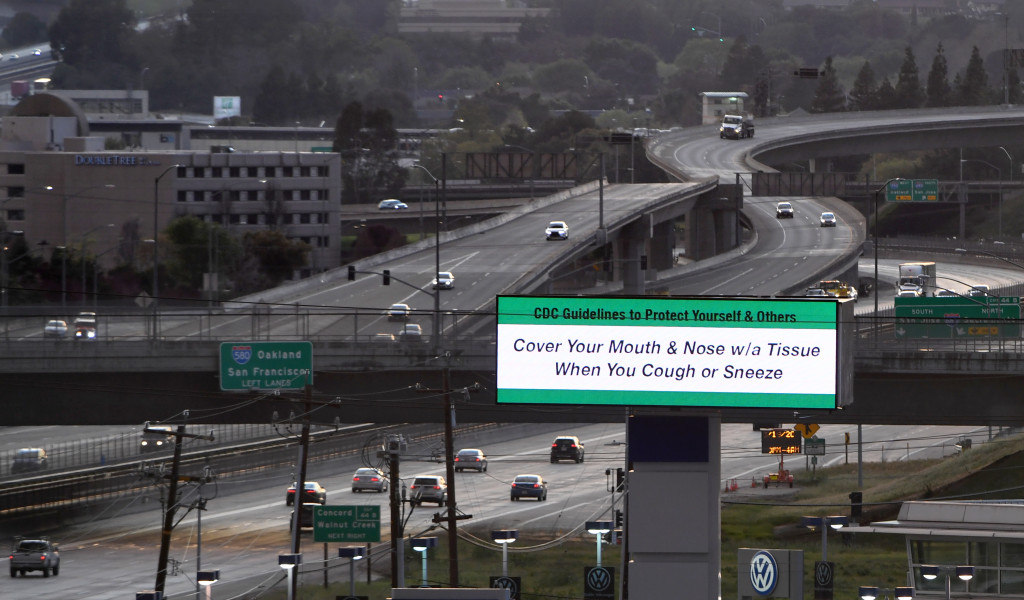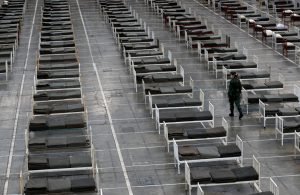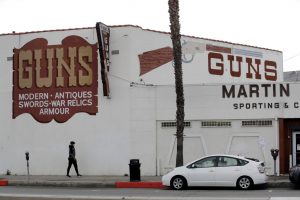The Bay Area’s shelter in place order has slashed car traffic more dramatically than any other major urban area in the country, new research shows.
The disappearance of the Bay Area’s fearsome congestion has been cutting smog and could also be helping keep supply chains strong, because trucks and the goods they haul are moving much faster than normal through our typically traffic-choked region.
According to the transportation research firm INRIX, there were half as many cars on the road in the Bay Area last Wednesday, Thursday and Friday than there would have been on a normal day.
While traffic fell nationwide last week amid efforts to contain the coronavirus, it hasn’t come close to matching drops in the Bay Area — there were 30 percent fewer cars on the road across the country on Thursday and Friday.
The Bay Area’s declines also outpaced those in other cities grappling with coronavirus outbreaks. INRIX’s data showed Seattle’s traffic began falling earlier than the Bay Area’s a couple of weeks ago, but by last week was only down 29 percent. New York City had the second-biggest drop of the nation’s largest urban areas, with a 43-percent decline on Thursday and Friday.
INRIX researchers noted the Bay Area was the first region in the country to adopt strict shelter in place orders meant to stop the deadly virus’ spread and has put some of the tightest restrictions on travel.
They also found that commercial traffic, such as service vehicles and local deliveries, has only fallen about 10 percent nationwide, and that long-haul truck traffic has stayed flat — which is good news for keeping grocery store shelves stocked.
Another piece of research from the trucking industry found supplies are breezing through the busy freeways that usually slow them down in the Bay Area and nationwide, because so many other drivers are off the roads.
“What we are seeing is an unprecedented level of truck movement,” said Rebecca Brewster, president of the American Transportation Research Institute. “Not only are trucks continuing to move, but they are doing
so at speeds well in excess of normal traffic patterns.”
Trucks typically crawl through Oakland’s MacArthur Maze at average speeds of around 10 miles per hour during the afternoon rush, and pretty much never reached speeds above 35 miles per hour during daylight hours at the seemingly always-clogged interchange, according to the institute’s data from truck GPS systems. Last week, though, trucks averaged over 50 miles per hour for much of the day and never dipped below 40 going through the area.
Around the interchange of Interstates 880 and 238, trucks that normally slowed down to about 25 miles per hour during peak times instead cruised by above 50.



















